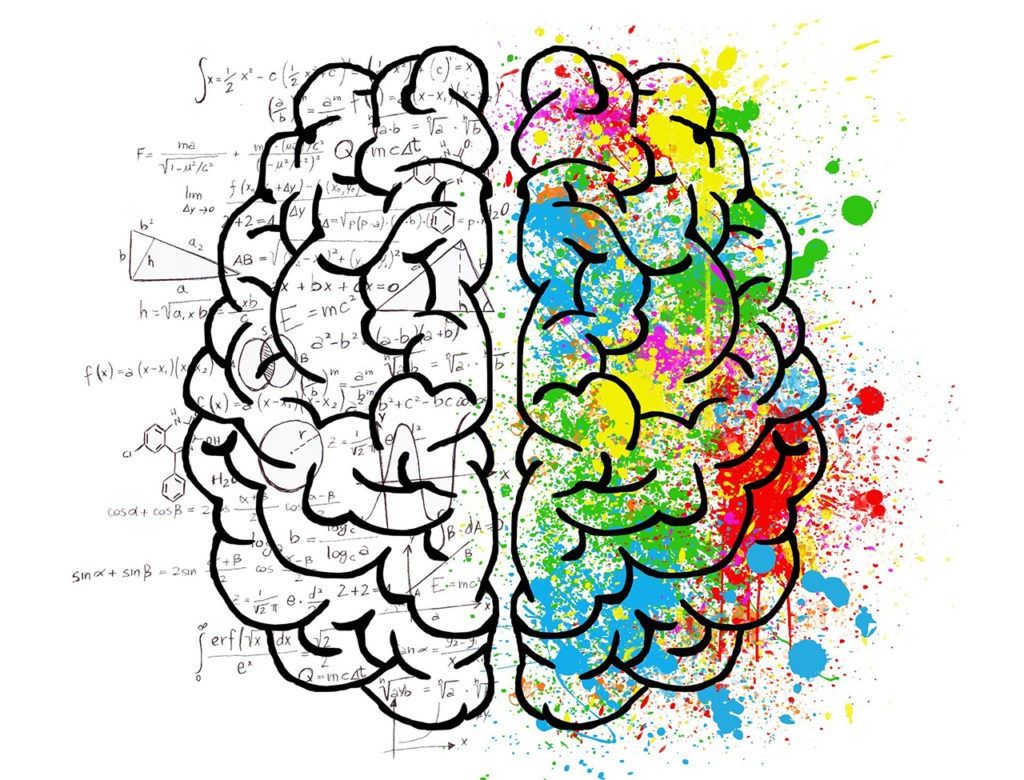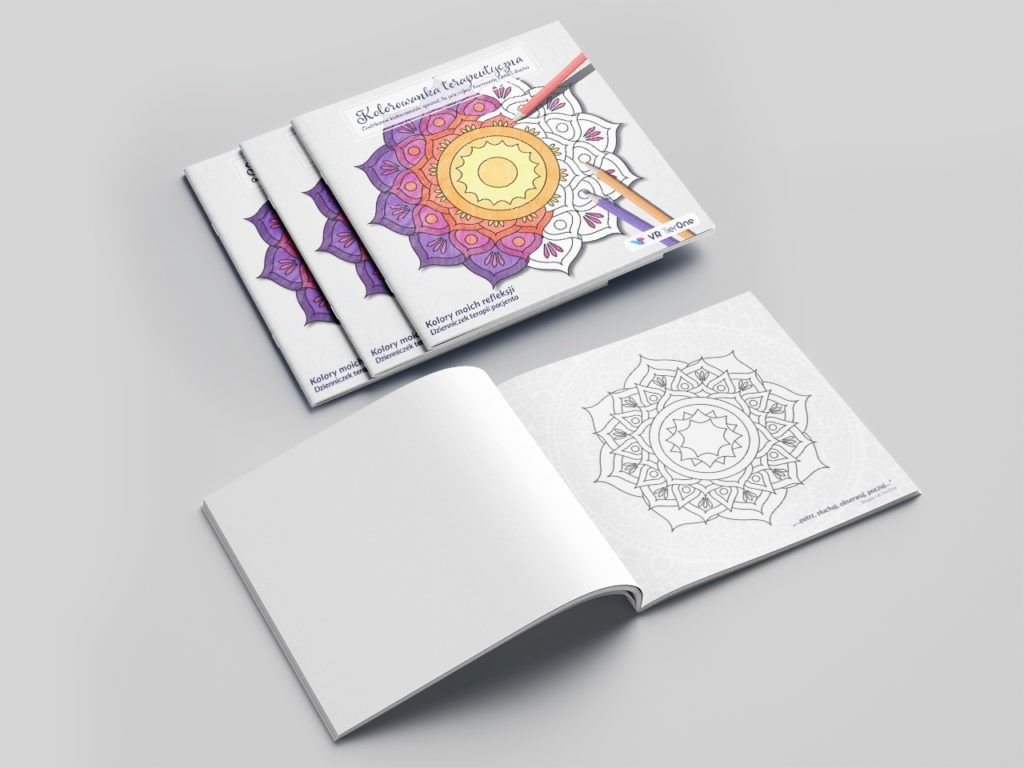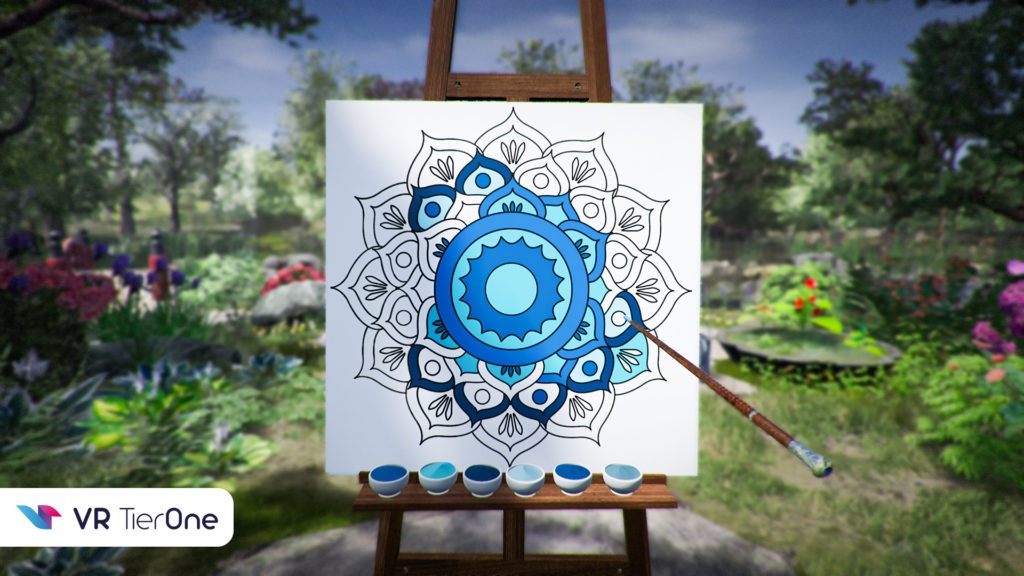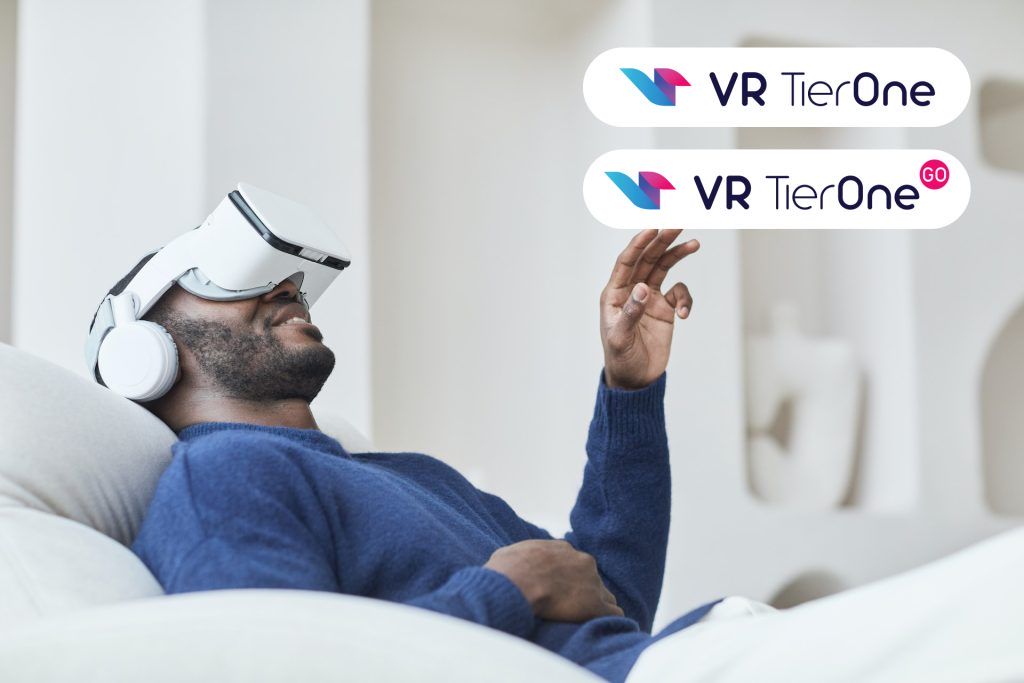Colouring, known to every child, evokes a sentimental smile in adults. In childhood, the activity of colouring supported manual and graphomotor skills, which we certainly could not have known as children. An activity loved by children, with time unjustly rejected by teachers and ourselves as unnecessary during the subsequent stages of our education. Colouring is a valuable activity for all age groups, and what’s more, it finds a place in the range of health-promoting and preventive activities. When colouring, everyone experiences a feeling of satisfaction.
Painting over ready-made graphic patterns promises an aesthetic effect, giving colour to successive fields allows us to divide our work in small stages. Completing the whole thing gives a sense of satisfaction and increases self-esteem. The scientific approach to the subject helps adults look at colouring in a completely new, revealing way. Colouring is an activity that engages both hemispheres of the brain. It turns out that when colouring, the brain emits waves that are characteristic of relaxation. By using colouring pages we can reduce anxiety and manage stress. Colouring helps with what the contemporary adult really cannot. It helps us relax.
Synchronization of both hemispheres
While we rest colouring, the brain reorganizes and strengthens its neural networks between the two hemispheres. The hemispheres are connected with each other by the commissural fibers of brain, consisting of white matter (nerve fibers) connecting both hemispheres. The integration of both hemispheres strengthens the nerve pathways responsible for the speed of impulse transmission. Each hemisphere of the brain is believed to have different, specific functions. These functions are not distributed symmetrically throughout the brain. According to the hypothesis of hemispheric specialization, the left hemisphere is linked with: logic, speech, writing, reading, counting, sequencing, perception of details, noticing differences, auditory perception, while the right with: creativity, intuition, emotions, holistic perception, noticing similarities, visual perception, abstract thinking, distinguishing colours and understanding metaphors. This division may erroneously indicate a complete separation in the performance of functions, but it is more about the fact that each of the hemispheres has a different strategy for processing the incoming information. According to current state of knowledge, it can be said that there is a functional asymmetry in terms of speech, visual and spatial abilities and emotions. The hemispheres do not operate in isolation, they constantly communicate with each other, and they are both involved in everything we do. Colouring stimulates both the left and right cerebral hemispheres, improving communication therebetween. Efficient communication between both hemispheres is of significance in the context of cognitive and motor functions. The patterns in the colouring book, demarcated by lines are what activates the “analytical” left hemisphere. The laws of “synthetic” and “creative” hemisphere merge the fragments in a colourful whole. The synchronization of both hemispheres taking place during colouring boosts the operating potential of our brain. This means, that regardless of our age and health condition, our learning efficiency increases. The synchronization of both hemispheres is essential for the correct functioning of the body.

Alpha rhythm
The brain is an electrochemical organ, and its electrical activity is demonstrated by the brain waves, which we can observe in EEG imaging. We can distinguish five ranges of brain waves, they are, starting from the lowest frequencies: delta, theta, alpha, beta and gamma waves. All waves are induced all the time and we need them, but one of them may be more active. The delta and theta waves are associated with sleep and a state of very deep meditation, alpha waves with the state of relaxed alertness, beta ones with normal daytime activities, and the fastest gamma waves form the least understood group of waves, and they are recorded in extreme emotions. It was noticed that the brain wave patterns differ depending on the activity performed, the current state of health and the state of mind. It turns out that the middle wave range is very beneficial for humans and, what’s more, it can be achieved, while the subject is awake. Once again, it is true that sticking to the golden middle is the path to happiness. Alpha brain waves with a frequency of 7-14 Hz are described as waves of well-being, calmness, and positive thinking. The alpha state is a state of conscious awareness, of being “here and now”. During the day we are most under the influence of the higher, beta frequency range. The beta state can be described as the state of everyday life and consciousness. This state is characterized by increased attention and vigilance, but prolonged exposure to this frequency is associated with stress and anxiety. Fortunately, we can lower our brain activity state, and transfer from the beta state to the alpha state. Once the alpha brain waves dominate, the work of the right and left hemispheres of the brain is synchronized. This synchronization brings harmony not only to the mind and spirit, but also to the body. The alpha state naturally occurs during the day before falling asleep and as soon as you wake up. The beneficial alpha state can be consciously induced at other times of the day. Various techniques are helpful, and colouring is just one of them.In the alpha state, we have access to ourselves. These waves disappear with physical and mental exertion, and they appear during a state similar to meditation. It is worth mentioning that the value of the alpha waves decreases in the elderly, which results in cognitive decline and may be related to depression at this age. Work on treating depression also concentrates at boosting the alpha wave range. The insufficient values of this wave are manifested by a drop in mood and motivation as well as low self-esteem. In the alpha state, awareness is maintained and relaxation comes. These waves raise the level of neurotransmitters, making us feel better. VR TierOne uses colouring-based tasks in virtual therapy, enabling patients undergoing therapeutic sessions to get rid of internal chaos and anxiety. This favourable condition can be continued by applying the therapeutic colouring book designed for this purpose.

Rehabilitation of cognitive functions
Cognitive impairment is observed in patients struggling with mental and neurological diseases, in the course of exacerbations of chronic somatic diseases. By using the benefits of a simple method of colouring, we can support psychomotor coordination, spatial orientation, task orientation, creativity and motivation in a non-pharmacological manner. The use of colouring as a form of occupational therapy is based on patients’ abilities. It strengthens the psyche and improves well-being, and in the motor dimension, sticking to the contours while colouring enhances manual perfection. It allows us to activate both hemispheres of the brain, combining creativity with logic. The harmonious work of both hemispheres is required for the identification of both the image as a whole and the local fragment of the pattern to be coloured. Active work of both cerebral hemispheres brings relaxation. Colouring improves our concentration and memory. It is a good warm-up for other activities that require thinking. Colouring pages are also used by psychologists for patients suffering from substance abuse or eating disorders.
The positive impact of colours
Colours have energy related to the wavelength of the electromagnetic wave. It is known that colours affect the well-being of a person and that the mental state can be changed with their aid. The therapeutic method called chromotherapy (colour therapy) relies on exposing the sense of our sight to the effect of colours. According to the knowledge on which colour therapy is based, red colour is linked with stimulating and accelerating metabolism. Red symbolizes what is tangible, earthly and carnal. Blue symbolizes what is immaterial and spiritual. Exposure to the right colour can restore our lost balance. When colouring, we should listen to our body and use the colours that our intuition suggests us. The choice of colour defines the disposition, mood and state of health. Introducing subsequent colours to the drawing and communing with them allows us to feel better and achieve harmony.

The trivial activity of colouring supported by scientific reports allows us to understand that there is a deeper sense to this activity. Colouring can certainly be called a calming activity, that fosters creativity, concentration and well-being. The therapeutic effect of colouring is to alleviate unfavourable mental states and optimize the reaching of health and life objectives. Logical arguments and the widespread availability of this form of relaxation speak for the growing interest in the therapeutic effect of colouring.






